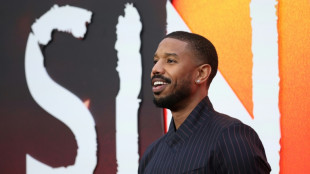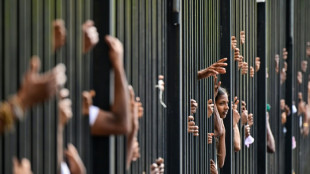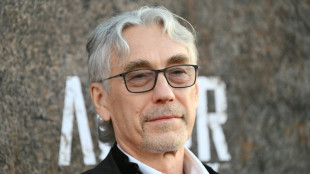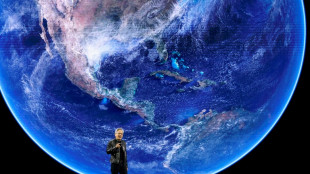
| RBGPF | 0.22% | 63.59 | $ | |
| SCS | -3.94% | 9.39 | $ | |
| BTI | -0.04% | 42.355 | $ | |
| RIO | -0.06% | 58.135 | $ | |
| AZN | -1.14% | 66.83 | $ | |
| BCC | -3.46% | 90.34 | $ | |
| GSK | 1.3% | 36.405 | $ | |
| CMSD | -0.78% | 21.79 | $ | |
| NGG | 0.54% | 72.5 | $ | |
| BCE | 0.85% | 22.23 | $ | |
| JRI | -2.06% | 12.15 | $ | |
| BP | -1.58% | 27.88 | $ | |
| RYCEF | -2.26% | 9.29 | $ | |
| CMSC | -0.46% | 21.72 | $ | |
| VOD | -1.14% | 9.205 | $ | |
| RELX | -0.99% | 51.687 | $ |

Francis, a pope for the internet age
As an at-times unwitting star on social media, Pope Francis knew how to exploit the internet to preach the gospel, broadening the Church's appeal while modernising its communications.
Yet the head of the world's 1.4 billion Catholics, who died on Monday, likewise regularly warned against the scourge of disinformation, and in recent years took aim at the possible perils of artificial intelligence.
It was his predecessor Benedict XVI who created the papal X presence @pontifex in 2012, at a time when the now-Elon Musk owned site was known as Twitter, in a bid at reaching younger people.
Within months of its creation Benedict stepped down and Francis took over, immediately striking social media gold.
The handle boasts a total of 50 million followers across its accounts in nine languages, among them English, Italian, Spanish, Portuguese, French, Polish, German and Arabic.
Even its account in long-dead Latin boasts one million followers.
Then, in March 2016, three years to the day after he became pope, the Argentine went even further by creating an Instagram account.
Today @Franciscus has nearly 10 million followers on the Meta-owned platform.
As on X, the Vatican posts daily photos and videos, mostly of a religious nature, as well as excerpts from the speeches, texts and public addresses of the religious leader.
His last video on Instagram, which consisted of an extract of his speech for the Easter Sunday mass, was liked by nearly 400,000 people.
- 'Disinformation and polarisation' -
That popularity however has not prevented him from criticising the negative effects of social media.
While they serve "better to connect us", they can "also reinforce our self-isolation", he notably said in 2019, adding that "they also lend themselves to the manipulation of personal data".
When Musk's X was accused of spreading false information and manipulating political debate and Europe in January 2024, Francis condemned "disinformation and polarisation, where a few centres of power control an unprecedented mass of data and information".
Just a few days earlier, he had already condemned an era of "fake news" and warned against the abuse of AI to "manipulate people's minds".
Francis himself has been the subject of AI-generated images that have gone viral on the web, showing the pontiff partying in a nightclub or getting married.
In March 2023, images of Pope Francis dressed in a white puffer jacket from luxury label Balenciaga and a bling crucifix in the fashion of American rappers became an internet sensation within a few hours.
That is not to say that the Catholic Church has eschewed evangelising via AI entirely.
Today, worshippers wishing to learn more about Catholic faith, dogma and theology can do so on platforms such as CateGPT -- a play on the name of AI market leader ChatGPT -- and HelloBible.
E.Goossens--JdB



